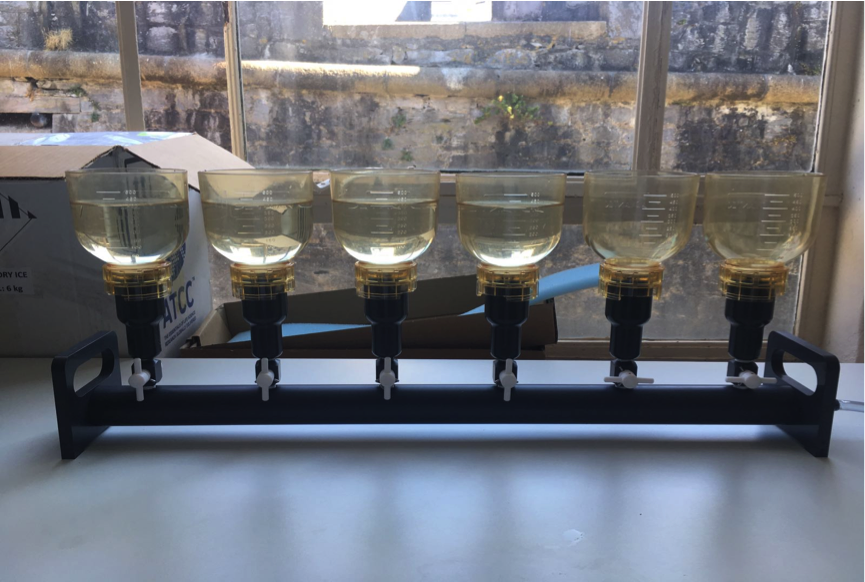The Angel Shark Project
Rose Boardman
Angel sharks (Squatina squatina) were once abundant throughout European waters, particularly throughout the Eastern Atlantic and Mediterranean Sea. Unfortunately, Angel sharks are very vulnerable to bycatch and are now listed as Critically Endangered. In order to safeguard the future of these sharks, The Angel Shark Project was created
Close up of a juvenile Angel shark. Photo: Fenella Wood
The Angel Shark Project (ASP) was founded in 2013 and collects a range of important ecological and population data on Angel sharks whilst engaging with local communities. ASP is a project ran by a great group, bringing together a collaboration between three different organisations, these being: Joanna Barker at the Zoological Society of London, Eva Meyers at the Alexander Koenig Museum and David Jiménez-Alvarado at the Universidad de Las Palmas de Gran Canaria.
They currently run 7 projects
Citizen Science
Ecology, Movement and Distribution
Acoustic Tracking
Genetics
Nursery Areas
Sportfishing Community
Questionnaire
Angel Shark Project: Wales
To help identify and investigate new Angel shark nursery grounds. Fenella Wood, an MRes student from Plymouth University looked at developing a method to identify the presence of Angel shark DNA in water. This research was useful in locating potential nursery sites for angel sharks throughout the Canary Islands.
Hey, Fenella tell us a bit about yourself?
I am a marine biologist who is specifically interested in sharks (because they’re the best). My predominant research interest is using DNA to understand more about animal ecology. My first ever experience with sharks was when I worked at the Bimini Biological Field Station for my placement year. This was the most amazing experience as sharks and rays are so abundant there. Getting to see these amazing animals in their natural environment is truly fascinating!
That’s great! So you’ve always had a passion for sharks, why did you focus your research on angel sharks?
Well upon completing my undergraduate degree I assisted with the Angel Shark Project (ASP), field campaign. I had never seen such an endangered species before; it was such an amazing experience. From this internship, discussions about potential masters projects cropped up and that’s how I chose Angel sharks as my study species.
What was the main focus of your research?
I wanted to combine my interest in DNA with my love for Angel sharks. Then the idea of environmental DNA (for short, eDNA) came along. eDNA refers to genetical material found in the environment.
How does one get eDNA from an Angel shark?
So, the same way that we shed skin cells and we see this in the form of dust, the same thing happens with aquatic animals. However, the cells from animals are collected from their poop, mucus, blood, and pee.
This is briefly how the process works:
1. We collect water at the beach.
Collecting water in the Canary Islands. Photo: Fenella Wood
2. We filter the water over a really fine membrane, which catches all the cells and then extract the DNA from the cells.
3. We then use short segments of DNA called primers, which match up to a very specific section of DNA we want. We designed these to only pick up Angel shark DNA.
4. We then amplify the Angel shark DNA so we have lots to work with and then we can run it through tests which show whether Angel shark DNA was present at that beach or not.
Preparing water samples in the lab. Photo: Fenella Wood
By testing this method, we showed that the presence or absence of eDNA corresponds to the presence or absence of Angel sharks. This method is a great way to identify the presence of an animal when the conditions are challenging or the animal you’re looking for is difficult to see. We wanted to know whether this method would work to survey Angel sharks, and it did! This information will be used to prioritise areas for spatial protection.
Conservation and protection is vital for this species and YOU can help The Angel Shark Project by reporting any sightings to the Angel Shark Sightings Map (http://sites.zsl.org/angelsharks/). This information will then be shared amongst Partners and Collaborators to help better understand and conserve these critically endangered sharks.



